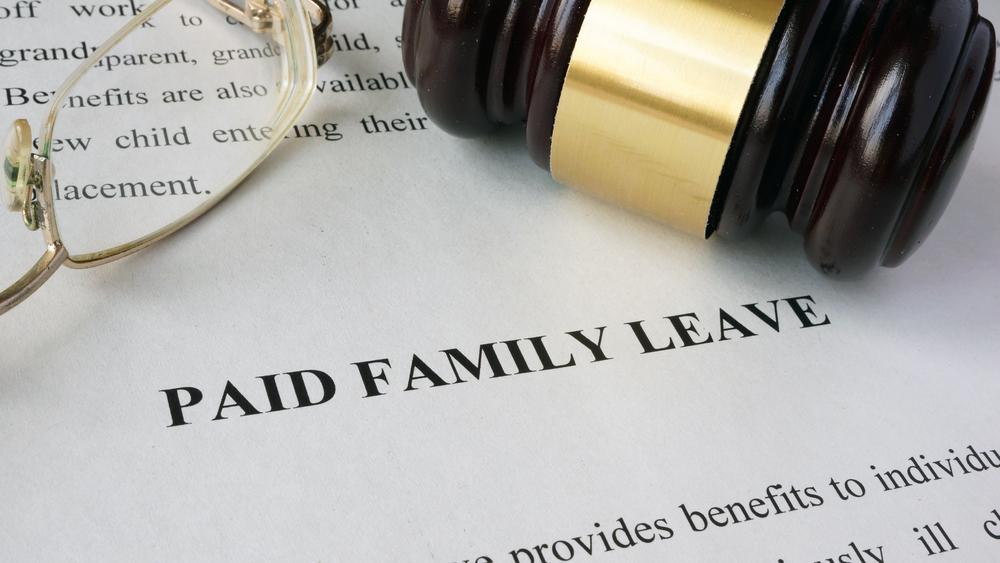MENU
Starting a Business
- Best Small Business Loans
- Best Business Internet Service
- Best Online Payroll Service
- Best Business Phone Systems
Our Top Picks
- OnPay Payroll Review
- ADP Payroll Review
- Ooma Office Review
- RingCentral Review
Our In-Depth Reviews
Finance
- Best Accounting Software
- Best Merchant Services Providers
- Best Credit Card Processors
- Best Mobile Credit Card Processors
Our Top Picks
- Clover Review
- Merchant One Review
- QuickBooks Online Review
- Xero Accounting Review
Our In-Depth Reviews
- Accounting
- Finances
- Financial Solutions
- Funding
Explore More
Human Resources
- Best Human Resources Outsourcing Services
- Best Time and Attendance Software
- Best PEO Services
- Best Business Employee Retirement Plans
Our Top Picks
- Bambee Review
- Rippling HR Software Review
- TriNet Review
- Gusto Payroll Review
Our In-Depth Reviews
- Employees
- HR Solutions
- Hiring
- Managing
Explore More
Marketing and Sales
- Best Text Message Marketing Services
- Best CRM Software
- Best Email Marketing Services
- Best Website Builders
Our Top Picks
- Textedly Review
- Salesforce Review
- EZ Texting Review
- Textline Review
Our In-Depth Reviews
Technology
- Best GPS Fleet Management Software
- Best POS Systems
- Best Employee Monitoring Software
- Best Document Management Software
Our Top Picks
- Verizon Connect Fleet GPS Review
- Zoom Review
- Samsara Review
- Zoho CRM Review
Our In-Depth Reviews
Business Basics
- 4 Simple Steps to Valuing Your Small Business
- How to Write a Business Growth Plan
- 12 Business Skills You Need to Master
- How to Start a One-Person Business
Our Top Picks
Can You Keep a Secret? The Importance of Nondisclosure Agreements

Table of Contents
For small and large businesses across all industries, protecting proprietary information is crucial to maintaining a competitive advantage. From critical financial information to exclusive designs, there’s plenty of information you should keep confidential from competitors. However, there are times you must disclose it to advance your interests. In these cases, the contract you use to keep your secrets as secure as possible is the nondisclosure agreement (NDA).
What are nondisclosure agreements?
An NDA is a legally enforceable written contract in which one or more parties agree not to disclose confidential information they’ve shared as a necessary part of doing business together.
NDAs are also known as confidentiality agreements, proprietary information agreements or secrecy agreements. Parties who sign the agreement are bound by it not to use or share confidential and proprietary information for business pursuits outside the arrangement.
Types of nondisclosure agreements
The type of NDA someone signs depends on who is sharing confidential information:
- Unilateral NDAs: Unilateral NDAs are the most common option. They’re used when only one party will share protected information. For example, consider employer-employee or investor-startup relationships or situations where you’ll arrange influencer content to grow your business. In these situations, sensitive data like financial details, business strategies, merchandising systems, trade secrets, shareholder information and other crucial operational data may be revealed during everyday work activities or negotiations and pitches. These agreements protect the sharing party by preventing its confidential information, which gives it a competitive edge, from falling into unauthorized hands.
- Mutual NDAs: There may be situations where two parties will exchange confidential information, such as franchise agreements, corporate takeovers and mergers and when you’re selling a business. In these situations, a mutual NDA (also called a bilateral NDA) is essential to ensure sufficient protection for both sides. With mutual NDAs, both sides seek to protect private information that will be disclosed and are obligated to adhere to the terms of the agreement.
- Multilateral NDAs: Some situations are highly complex and include numerous parties that require confidentiality. In these instances, a multilateral NDA is necessary to protect each party’s private information.
Consider hiring a business attorney to draft your NDAs, advise you on customizing them and help you follow through with consequences if someone breaches their agreement.
Why are nondisclosure agreements important?
NDAs are crucial because they create a legal framework to protect ideas and intellectual property.
For example, say a company has a design for a new invention but must work with a manufacturer to build the prototype and future units. The manufacturer won’t know what to build without receiving proprietary information. In this case, the design company can protect its information with an NDA. It can share invention details, knowing it can file a lawsuit if the manufacturer divulges information about the design company’s invention.
What are the downsides of nondisclosure agreements?
Before entering into an NDA, consider the following potential downsides and risks:
- NDAs can be costly: Writing an NDA comes with associated costs, including legal fees. The good news is that once you have the template, you can use this general NDA to customize future NDAs.
- NDAs may be accidentally violated: Employees might not fully understand the terms of the agreement and may accidentally violate the NDA. This situation can prompt an unwanted legal process and incur legal fees for enforcing the NDA.
- NDAs may stir mistrust: If you require employees to sign an NDA as part of the employment contract, your workers may feel you don’t trust them. This sentiment can foster an uncomfortable work environment or lead to speculation over the motives behind the NDA.
- NDAs may serve as a barrier to top talent: The restrictive nature of NDAs, which prohibit employees from discussing work details, employment terms and company culture, can deter potential high-quality employees from joining your company. Those who value business transparency and openness in the workplace may see this level of confidentiality as a red flag.
Intellectual property insurance can help you pay for litigation against someone using your intellectual property without authorization.
What should you consider before requiring an NDA?
If you’re a business owner, carefully consider the following before requiring someone to sign an NDA.
1. Pinpoint situations where you’ll need an NDA.
Every NDA should be tailored to a specific relationship. Consider the following examples where an NDA should be considered:
- Onboarding new employees and independent contractors: An NDA is almost always recommended and typically expected in onboarding because new employees and contractors will likely access sensitive company information. Have the employee sign an NDA as soon as possible as part of their employment contract; anything that occurs before signing can cause issues down the line if they disclose sensitive or confidential information. Keep the signed NDA in the employee personnel file.
- Approaching investors or lenders: When presenting your idea to investors or seeking business loans, consider what your initial conversations will entail, which information is public or private and how much confidential information you must disclose to pique interest. If you can conduct initial conversations around public and nonconfidential information, hold off on asking for an NDA. Once conversations turn to a company’s sensitive business information, such as business accounting, marketing strategies or an intellectual property portfolio, or details about services and products, both parties should secure and sign an NDA.
- Courting a new client: Initially, discussing terms without an NDA may be beneficial, so you and your potential new client can do your due diligence via outside contacts. Once you formalize a deal or venture, an NDA may be necessary to exchange information more freely about the project’s scoop, entities or matters involved and price or fees.
Make an NDA and a noncompete agreement a standard part of your onboarding process to ensure all employees are bound by your terms.
2. Determine the information you must protect with NDAs.
Since NDAs vary, you must tailor them to your specific business arrangements. Boilerplate agreements often serve little purpose if breached; parties will simply argue over what is and isn’t considered confidential.
Here are the primary categories to address in a typical NDA:
- Trade secrets and intellectual property: When dealing with new employees, private contractors or new clients, protecting a company’s trade secrets and intellectual property is of the utmost importance. If you’re onboarding a new person to a project or giving a client access to your product (especially if you’re in the software realm), tailor the NDA to encompass what you want to protect and what is considered a breach.
- Marketing or financial information: If you’re more concerned with keeping your business’s marketing strategy or financial information private, highlight the information that falls under these categories in an NDA.
- Product testing: If you allow clients to beta-test a product and elicit customer feedback on their user experience or product recommendations, include a feedback clause within the NDA to protect and maintain the confidentiality of all exchanges belonging to your company.
What should you include in an NDA?
An NDA should comprehensively and clearly outline its scope and parameters for all involved parties. To guarantee your agreement is complete and effective, ensure it includes the following elements.
1. Include a description of confidential information in your NDA.
When drafting an NDA, include specific information defining what constitutes confidential information. While specific agreements may define any information disclosed as confidential, others will only deem information as private when explicitly stated or marked.
2. Include all parties’ requirements and obligations in your NDA.
Explicitly state how each party will handle the confidential information. For the recipient, this means outlining measures they will take to keep the information secure, like preventing access by unauthorized individuals and ensuring it won’t be used for personal advantage.
3. Include exclusions to the confidentiality agreement in your NDA.
If there is information you don’t want covered under the NDA, list it in this section. For example, list previously disclosed information, common knowledge and information that must be shared with third parties to conduct regular business.
4. Include the duration of the NDA.
Specify the duration of time the confidentiality agreement will remain active. Whether the agreement is indefinite or for a set period ― like in cases where a brand is guarding details about an imminent product launch ― it’s important for all parties to be aware of the NDA’s active period.
5. Include the consequences of an NDA breach.
Detail the course of action if any party breaches the agreement. Some remedies may include paying for damages, loss of employment or filing a restraining order. Include a clause allowing alternative dispute resolution in case these remedies aren’t deemed appropriate for the situation.
However, avoid specifying dollar amounts for damages, as you’ll be locked into these costs during the court process, which could harm your case.
What should you do if a nondisclosure agreement is breached?
Unfortunately, if someone breaches an NDA and spills your company’s confidential information, serious damage can be done, depending on the extent of information disclosed.
When you learn about an NDA breach, immediately notify your company’s legal counsel and determine if it’s possible to seek a temporary restraining order or preliminary injunction to prevent further information dissemination.
From there, discuss the appropriate next steps with legal counsel, including seeking damages for breach of contract, misappropriation of trade secrets, copyright or patent infringement, breach of fiduciary duty, conversion, trespass and theft.
Each employee, client or potential investor is different, so how you approach each situation requires equal parts legal consideration and business strategy.
Remember that if you are being asked to sign an NDA, don’t think of it as a restraint. Instead, see it as an opportunity to become part of the circle of trust.
Sean Peek contributed to this article.












